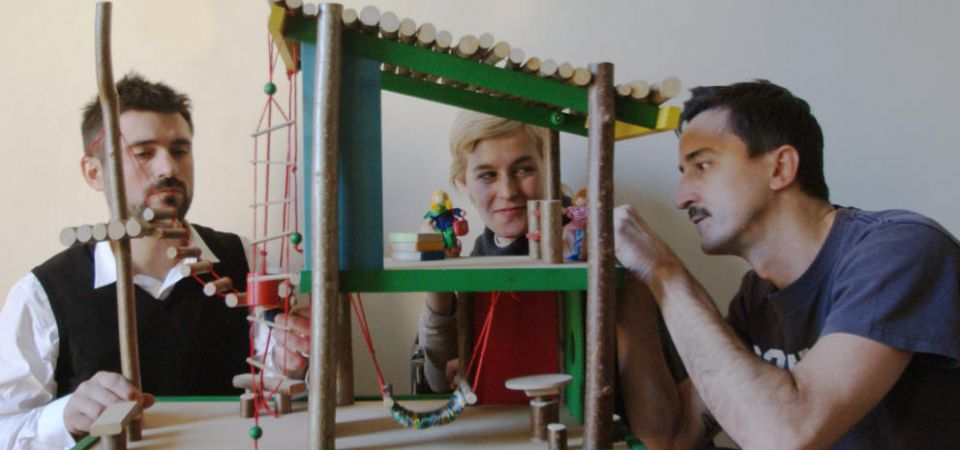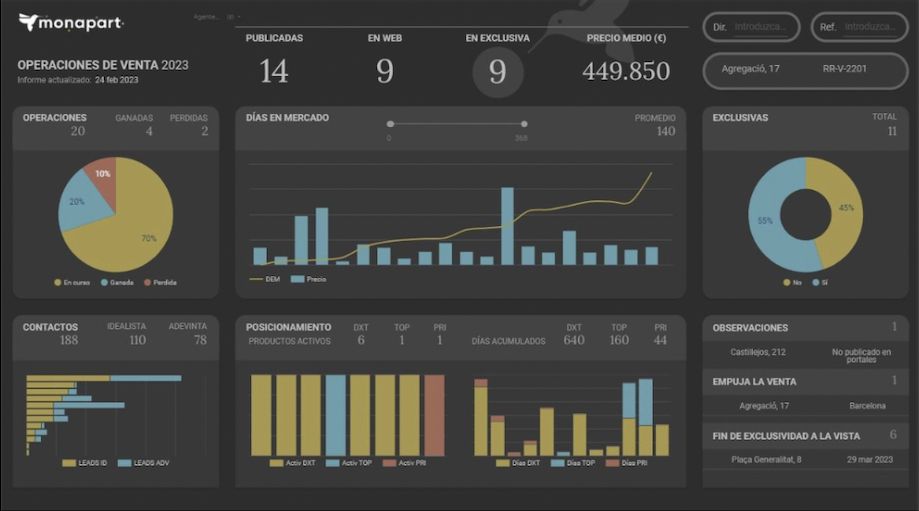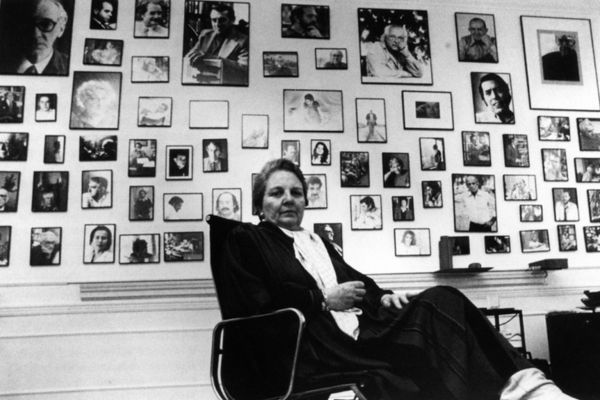The customer at the centre of the marketing strategy
For Monapart, putting the customer at the centre of the marketing strategy involves three major steps: getting to know them well, creating links through values and keeping the conversation alive.
On Thursday 5 October, the auditorium of the Fundación Giner de los Ríos in Madrid, was the meeting point for the Fotocasa Real Estate Conference 2017which brought together more than 200 professionals from the real estate and marketing sectorready to decipher the keys to the real estate market The current situation and the challenges it faces, even with the long shadow of the bubble of a few years ago still lingering in the minds of many.
Presentations by Gonzalo Bernardos (@GonBernardos), professor of economics at the University of Barcelona, and of Isaac Hernandez (@IsaacHernandezV), general manager of Google for Work Spain and Portugal, gave way to a subsequent round table discussion in which I had the pleasure of participating together with David Soler (@dsoler) (eMarketing and eBusiness consultant and Director of the Postgraduate in Digital Marketing at EADA) and Sergio Marcos (@fotocasaacademy) (training director of Fotocasa Academy).

The round table discussion, moderated by Antena 3 presenter Mónica Carrillo (@MonicaCarrillo) addressed, inter alia, the importance of situating the customer at the centre of the marketing strategy. So what does this mean for Monapart and how do we put it into practice?

Monapart was born in 2010 precisely out of this concern: the radical approach to sales of traditional real estate. When we reviewed the customer journey In a sales process, we realised that all the points of contact with the client were guided by the same spirit: to close the deal. The relationship with the client was subordinated to the duration of the service, the communicative outputs revolved solely around the "real estate product" and the client was cold, with worn-out corporate words, very little seductive and above all, nobody defended a different value proposition beyond the classic binomial luxury real estate agencies versus generalist real estate agencies.
We understood why the market saw real estate agencies as a "necessary evil" and we decided to take a stand by founding a niche real estate agency specialising in charming homes, aimed at people like us, orphans of a real estate agency that would talk to them face to face, aware that selling a home is one of the most important transactions in life. An agency that, in addition to talking about flats, would feed the conversation by talking about many other things... through a fresh, friendly, carefree language, always with a touch of pepper. And above all, we understood that often, putting the customer at the centre of the strategy sometimes means saying no to him.
Monapart is considered the only real estate agency with fans.
Seven years have passed and the real estate sector has undergone enormous changes, but we like to think, and this is corroborated by numerous professionals inside and outside the sector, that Monapart's differential proposal set new standards and that today, Monapart is considered the only real estate agency with fans. So much for the starting point, but... how to move on to a customer-centric marketing? I would summarise it in these three consecutive and essential steps:
* First, KNOW YOUR CUSTOMER WELL: Who is he/she? Where does he/she move? What are his/her consumption habits? What is he/she interested in? What does he/she need? How does he/she need it and when? etc. An in-depth analysis of your customer is essential to know how to add value.

I continue to be surprised by the amount of advertising material in the real estate sector in which it is impossible to determine to whom the message is addressed. Is it a buyer's agency or a seller's agency? And if it is a buyer's agency, how is it possible that the same flyer advertises a luxury second home next to rental flats in the metropolitan area? Strategy is the art of renunciation.
An in-depth analysis of your customer is essential to know how to add value.
* Second, CONNECT WITH YOUR CUSTOMER. The most powerful bond you can create with your customers is by sharing values. And often, these are conveyed through worn-out and empty terms such as "exclusivity", "professional treatment", "excellence in service"... What do we ourselves, as potential clients of other companies, feel when we see these leaflets where we are always told the same thing through a very corporate language? Not very seductive, is it? And what's more, we are always told the same thing! So many square metres, so many rooms, this price, zzzzz. In real estate, monologues often persist and it is important to understand that if we monopolise the conversation, it is not a conversation.
At the other end of the spectrum, we find companies that through the storytelling are presented to the world through the personal stories of their founders, sharing their vision with a close and sincere tone, explaining what led them to dedicate themselves to this, what gets them out of bed every morning... A good example of this is this video of the famous American ice cream brand Ben & Jerry's:
And the same applies to product communication. There is an example that I love because it is so clear: Steve Jobs did not explain the Apple iPod by sharing its physical characteristics (because they are available on Google at the click of a button), but rather "Imagine carrying all the music in the world in your pocket as you stroll along on a spring afternoon...". Different, isn't it? This is how we will be able to connect with our customers, face to face. Let's not waste the opportunity of their attention on informing them, but on seducing them.
The tangible information is on Google. But the heritage of the customer link still belongs to the brands.
* Third, CULTIVATE THE RELATIONSHIP WITH YOUR CUSTOMER. Traditionally, as I mentioned at the beginning, the relationship with the client was limited to the duration of the service. He would come through the door, give us a flat to sell, we would find a buyer, the sale was made and signed before a notary. End of story. But the paradigm shift brought about by the digital transformation has meant that we as consumers have from buying products or services, to buying experiences. And technology is precisely there to replace us and automate all those tasks that provide little value so that we can focus on high-value tasks, those that nurture that experience and build customer loyalty by taking care of the relationship with the customer.

And how do you take care of the relationship with the customer? For Monapart it has been relatively easy: treating them as we would like to be treated ourselves. Do we want to be talked to only about the "real estate product"? No. Do we understand what "exclusive treatment" means? No. Are we seduced by corporate language? No. Do we buy into clichés like "ideal for couples" or "move in ready"? No. Do we believe that we should look for him wherever he moves and not wait for him to come? Yes. Are we aware that we are not talking about square metres but about homes? Yes. Are we aware that we must be up to the responsibility of accompanying him in the most important economic decision of his life? Absolutely yes.
Satisfied customers are your company's best asset.
Well, we know our client, we share values with them... And why so much effort in prolonging the relationship with them? So that they keep us in mind and thus favour their prescription, something especially important in the real estate sector, where repetition is rare, as I explained in another post: "In real estate, the customer journey is a one-way trip".

This is a summary of my intervention at the detabe round table on the customer-centric marketing within the framework of the Fotocasa Real Estate Conference 2017. I hope you found it useful and don't hesitate to share your opinions with me. Learning is constant and if it is together, so much the better!





